What's New
Displaying results 4831 - 4840 of 4914
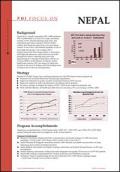
Resource | Fact Sheets,
Nepal faces a rapidly expanding HIV/AIDS epidemic. This is attributable to an active sex trade, increasing number of HIV infected injecting drug users, and substantial male labor migration. Recent studies confirm that Nepal has gone from a low-prevalence country to one with a concentrated epidemic in one or more high-risk groups. For example, HIV-1 seroprevalence has been rising rapidly in association with high risk behaviors, with current levels of 40% amongst the nation’s injecting drug users and approaching 20% amongst Kathmandu’s female sex workers (FSWs). In the absence of effective public health interventions, HIV prevalence in Nepal may increase to the level of making AIDS the leading cause of death in the 15-49 year old population.

Resource | Tools,
This action kit is for young people and adults who run youth programmes that are looking at issues of sexual and reproductive health, such as life skills and HIV (Human Immuno-deficiency Virus). It aims to raise awareness of the importance of gender issues in sexual and reproductive health and to provide practical ideas for introducing gender aware- ness into existing youth programmes. There are sections that explain what gender is and how it affects our relationships and our sexual and reproductive health.
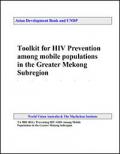
Resource | Tools,
This is a toolkit to guide the management and implementation of HIV prevention programmes for mobile populations in the Greater Mekong Subregion. It will be used by people and organisations who already have some experience in HIV prevention, and are now ready to address the specific challenges of working with mobile populations. Specifically, the toolkit addresses ways to work with mobile groups of construction workers, truck drivers, seafarers and migrant sex workers.
While the toolkit supports HIV prevention amongst mobile population groups, it also recognises that HIV is transmitted through interaction between mobile or migrant groups and the more stable communities they pass through, live in or return to. The toolkit therefore strongly recommends that effective HIV prevention will occur only when there are programmes for mobile groups and for the more stable communities with whom they interact.

Resource | Fact Sheets,
India is a country of more than one billion people, seventeen official languages, and hundreds of ethnic groups. The first case of HIV was reported in 1986 in Chennai. The National government launched the National AIDS Control Program in 1987.

Resource | Tools,
The aim of the manual is to introduce teachers and others who work with young people to a way of teaching drug education and other health issues such as HIV/AIDS, based on the development of links between knowledge values and skills.
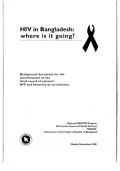
Resource | Publications,
Information from the third round of HIV surveillance in Bangladesh show that infection rates remain low, but it is now clear that this situation will not continue unless there is a radical reduction in risk behaviour. Sex workers in Bangladesh report among the highest number of partners per week in Asia and condom use are lower here than in any other Asian country in which it has been measured.
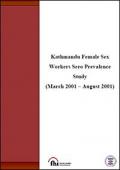
Resource | Publications,
This study was carried out among female sex workers in Kathmandu valley from March to August 2001 to determine the prevalence of HIV and syphilis and also to examine behavioral attitudes related to sexually transmitted disease.
Total of 500 female sex workers (300 street based and 200 non-street based) were included in the study. All the female sex workers who agreed to participate were included in the study. After obtaining an informed consent a questionnaire was administered and blood sample was collected.

Resource | Publications,
This report illustrates the powerful and negative effects of stigma on those affected by HIV/AIDS. The stories from children are particularly powerful. They remind us all of the human tragedies that lie behind the statistics. HIV/AIDS touches us all in some way – through family, friends, or communities. Addressing the HIV/AIDS pandemic requires a strong and coordinated response from all sectors of society - government, NGOs, churches, communities and children, as well as the international community. But this response has to incorporate changes in attitude and behaviour at the personal level, if they are to be successful.
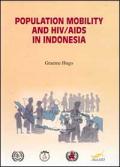
Resource | Publications,
The aim of this study is to use existing information to provide a comprehensive picture of the levels, patterns, composition and trends of the various types of contemporary population mobility occurring within Indonesia, as well as from and to the country. Insofar as it is possible using existing data, the study aims to indicate how population mobility in Indonesia is linked to the existing and likely future diffusion of HIV/AIDS.
It finds that, while undoubtly such a relationship exists, there is a dearth of existing research and knowledge not only into the nature of the relationship but also the location of the places where mobility is influencing and likely to influence the spread of HIV/AIDS.

Resource | Fact Sheets,
Indonesia, a geographically diverse country, has a relatively low HIV prevalence. However, cumulating epidemiologic evidence shows epidemics are emerging among some high-risk groups, particularly including sex workers in its eastern Irian Jaya Province and intravenous drug users (IDUs) in Jakarta. Three years of political upheaval and economic crisis have challenged development and health programs and threatened the integrity of this culturally and geographically diverse country





